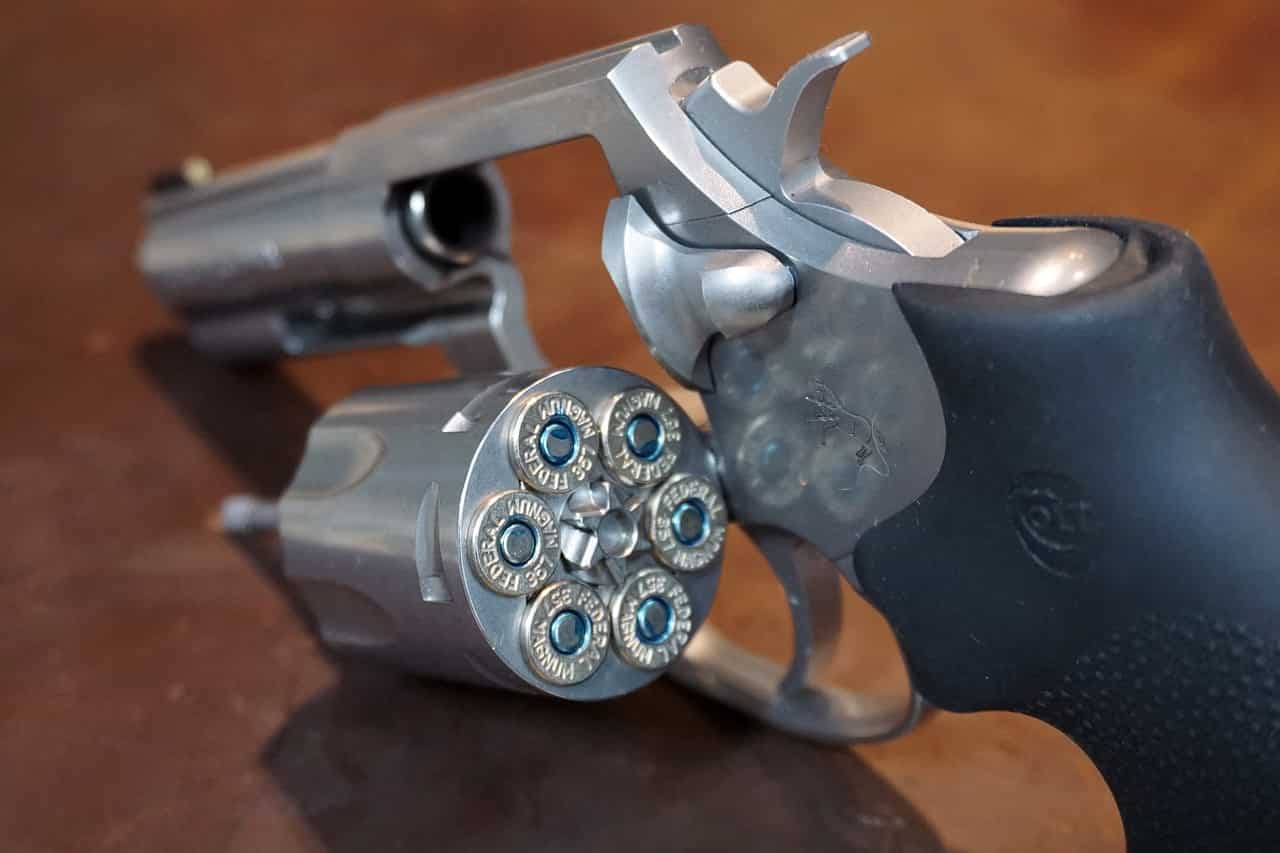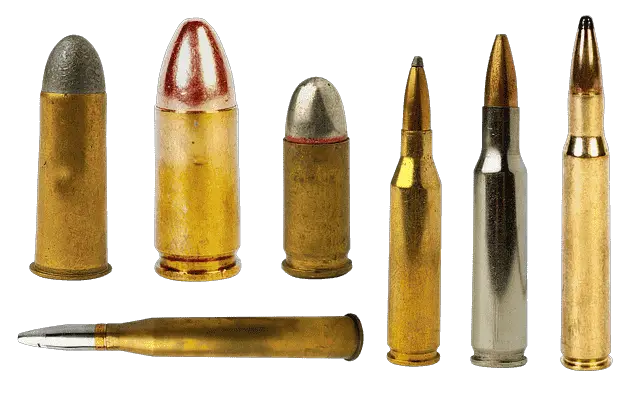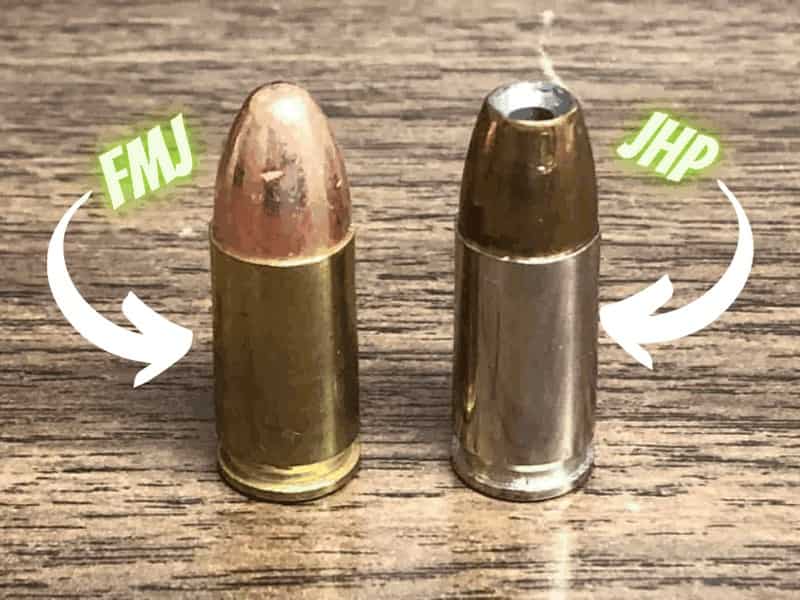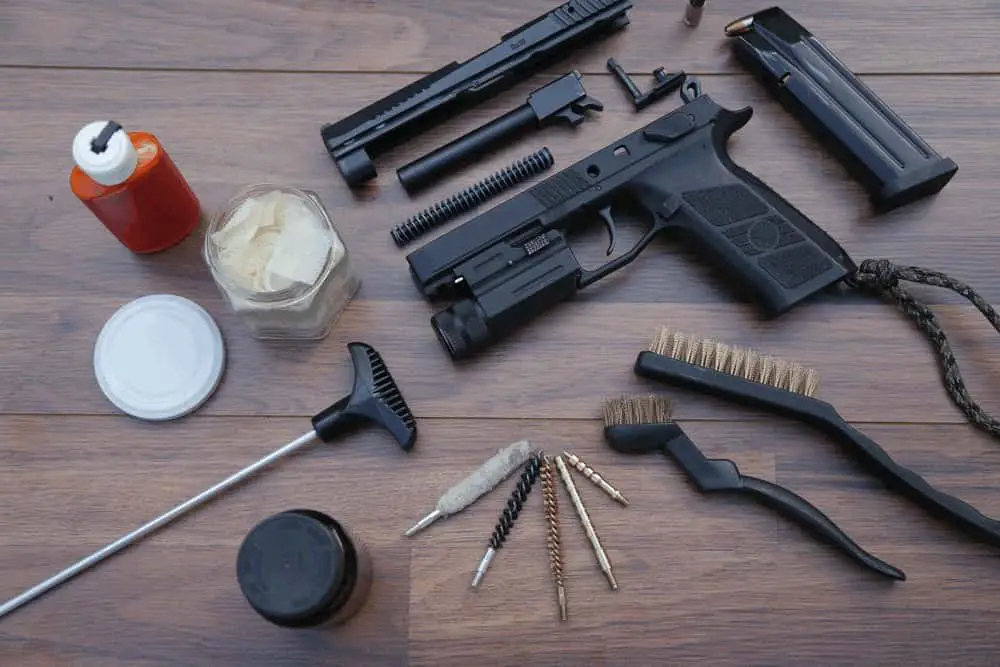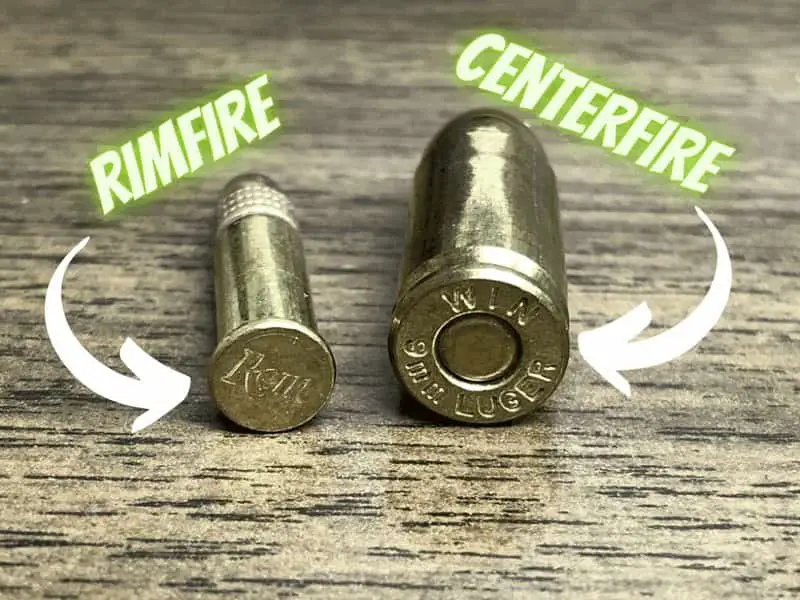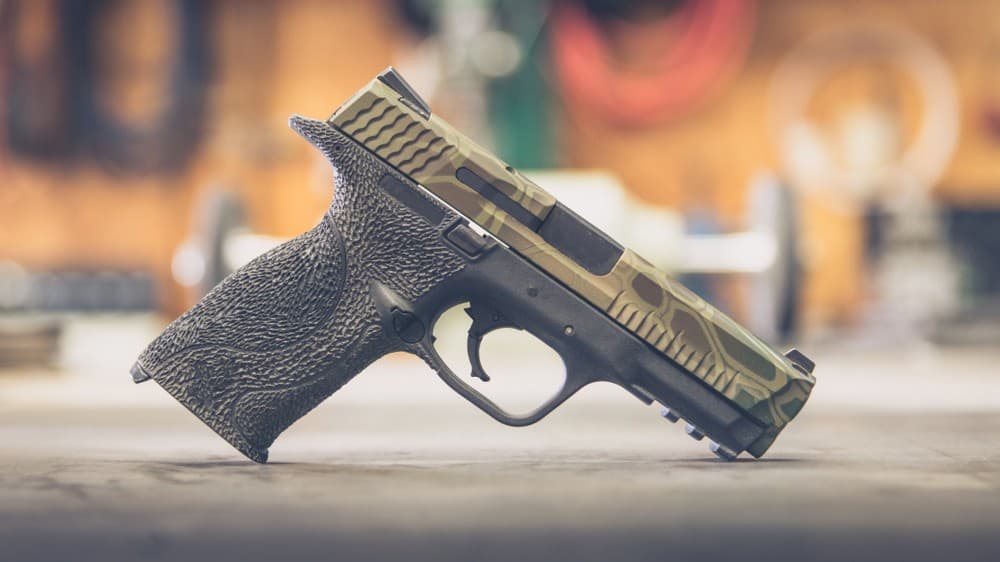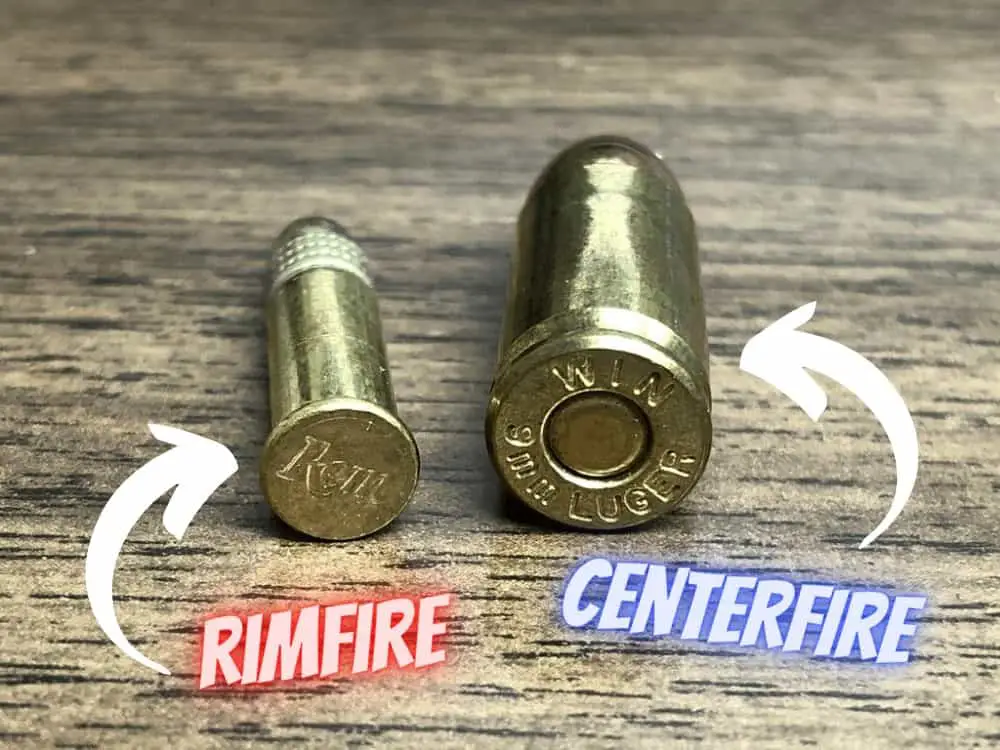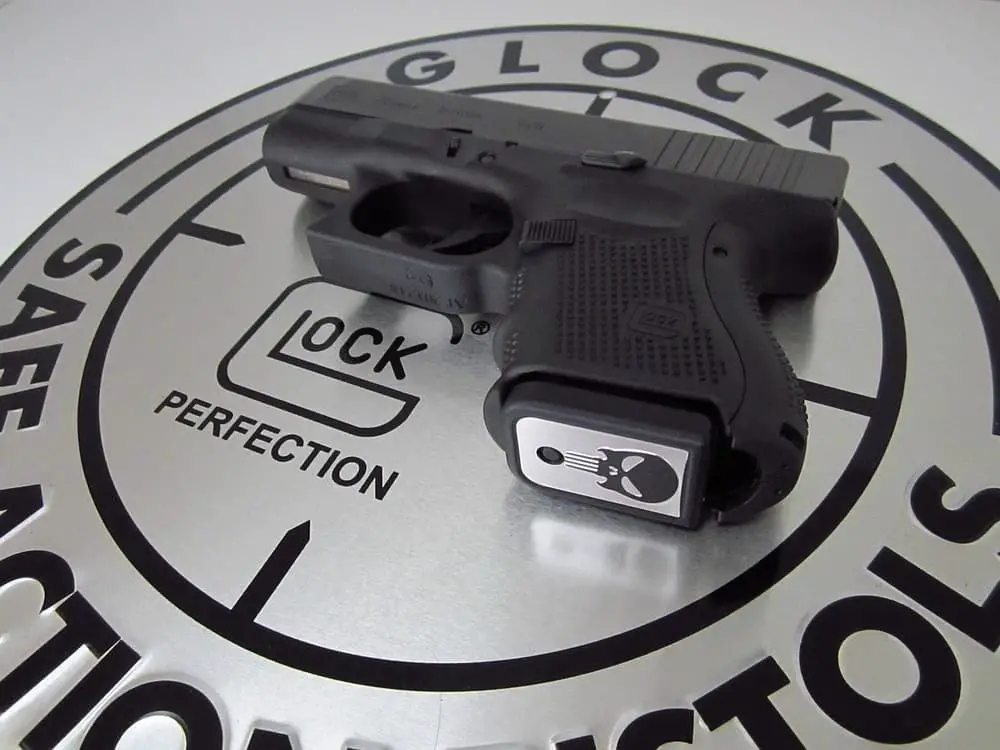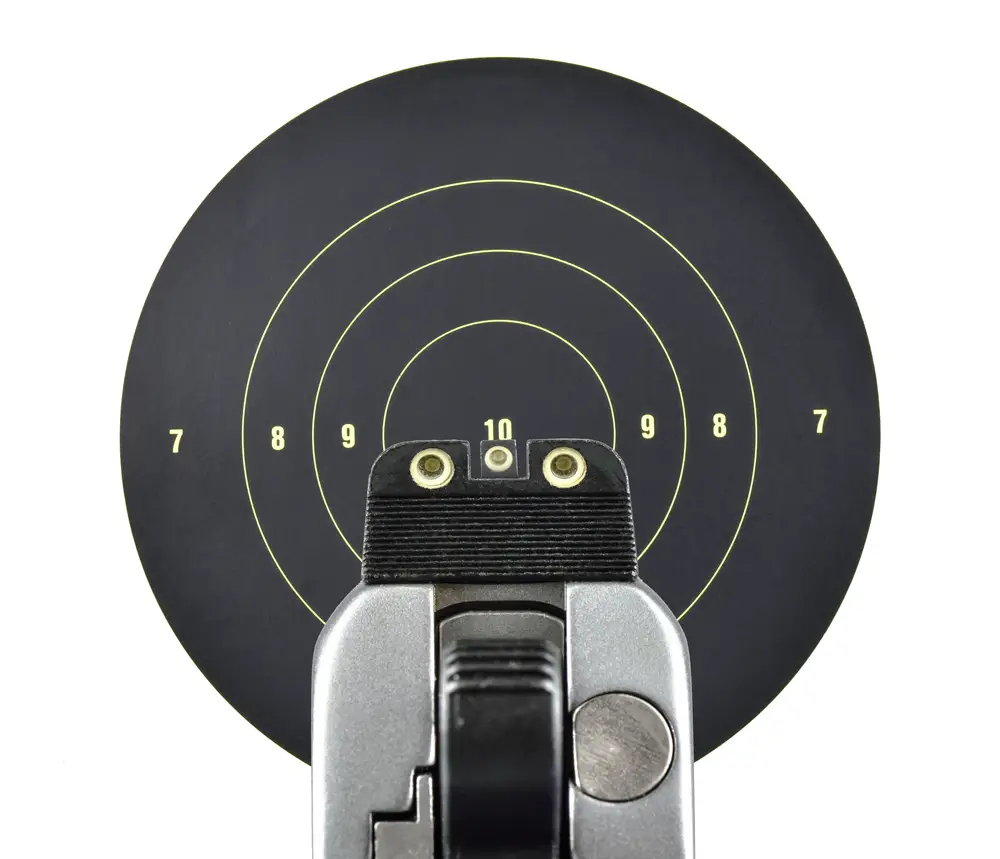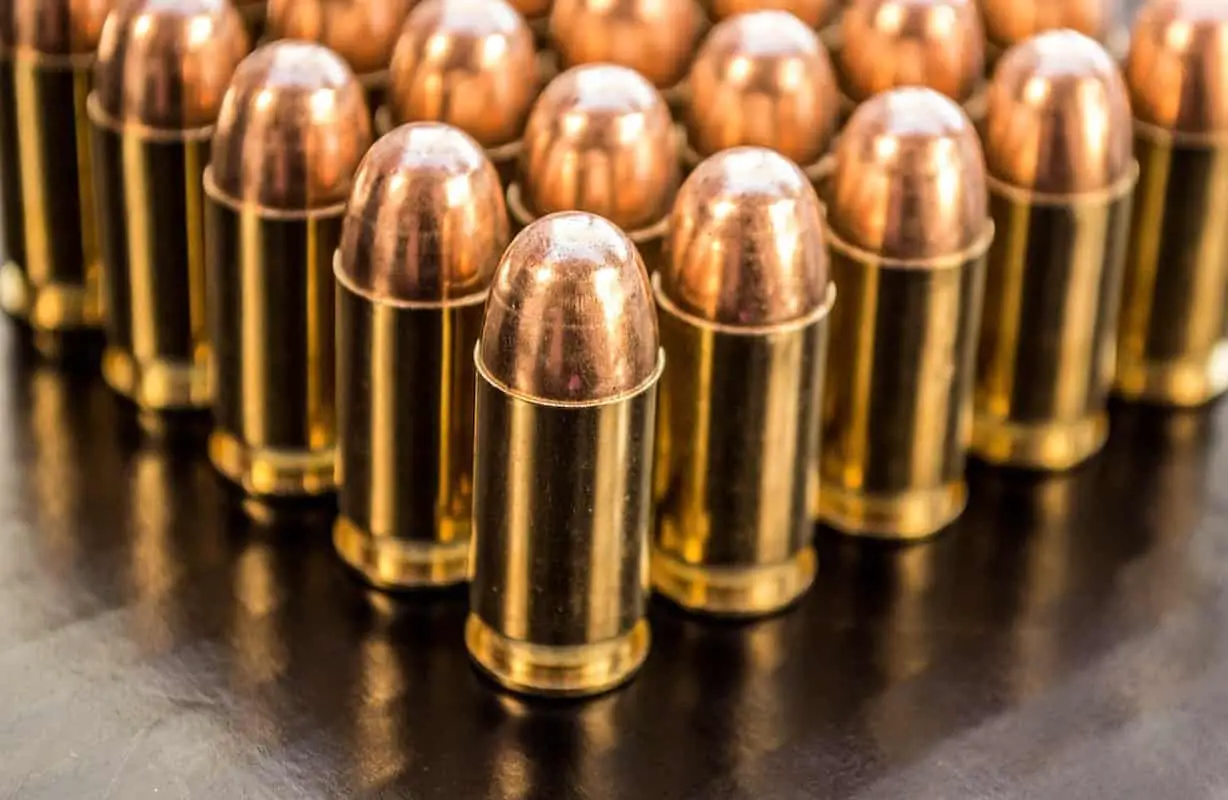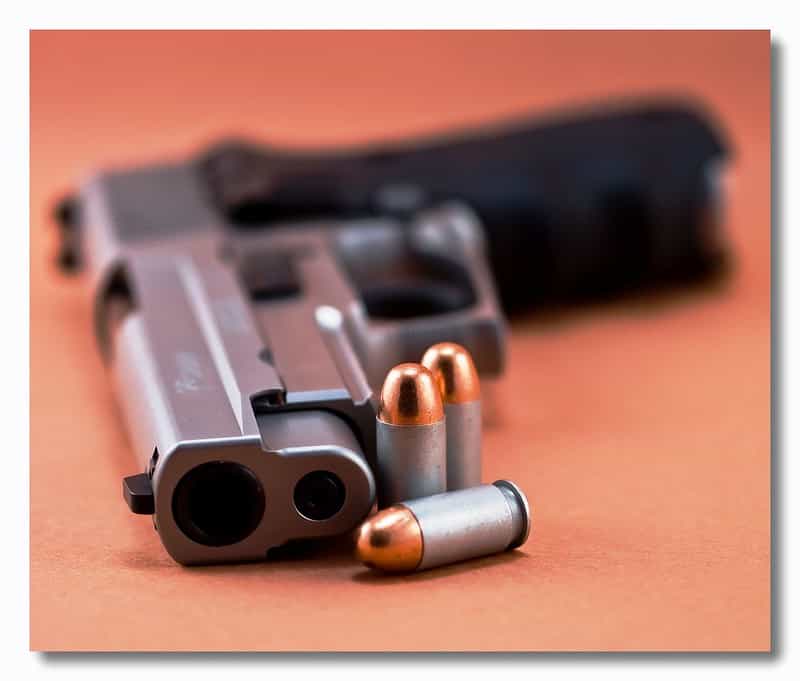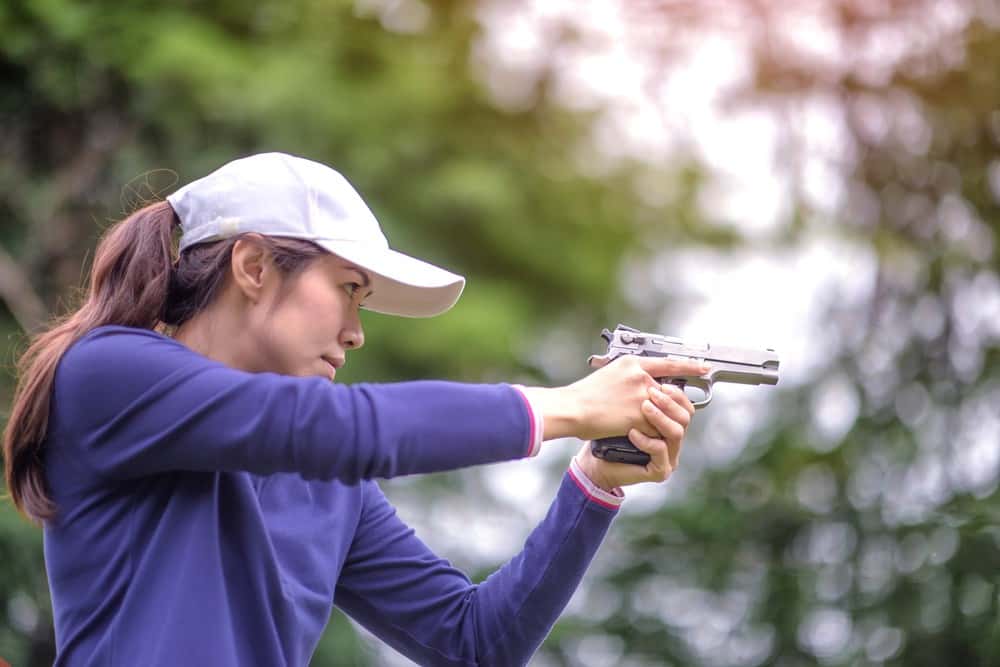
Whether it’s for sport or you find yourself in a defensive situation where you need to use a handgun, how you hold it will significantly affect your accuracy. Developing your handgun techniques will help you become a better shot and keep you safe.
Read on to learn the answer to the question: How should you hold a handgun for maximum accuracy?
Handgun Techniques
A lot more goes into holding a handgun then merely picking it up and shooting. Understand the methods that go into shooting a pistol before you take your first shot.
Grip
You should always hold your gun with your dominant hand. While your writing hand is usually also your dominant hand for gripping your handgun, try both hands and get a feel for what is most comfortable to you.
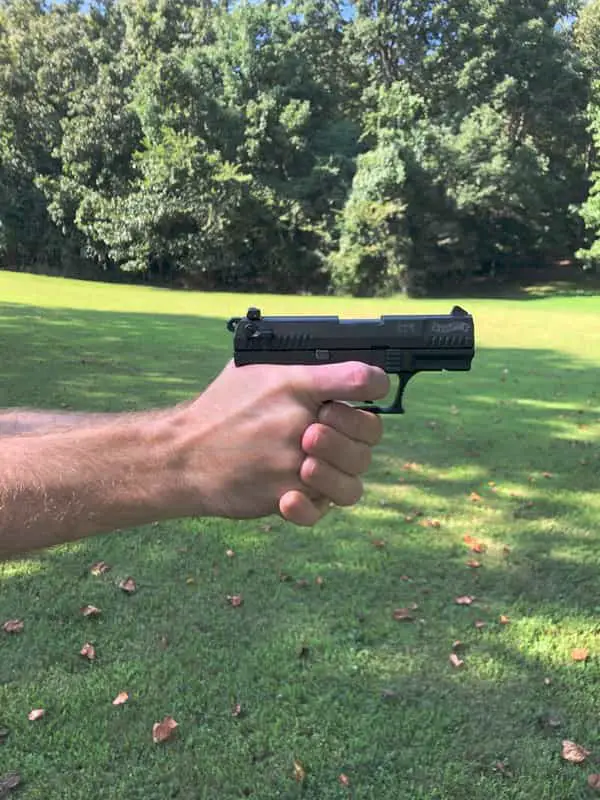
After you’ve felt for your primary hand, you need to practice gripping the gun. Hold the handgun so that you can press the trigger back without losing focus on your sights. This may take some practice, but it is vital to improving your accuracy.
When holding your handgun, keep your thumb held high on the gun. You do not want a gap between the backstrap of the pistol and your hand. Maintaining this high grip will help you to control the gun during recoil.
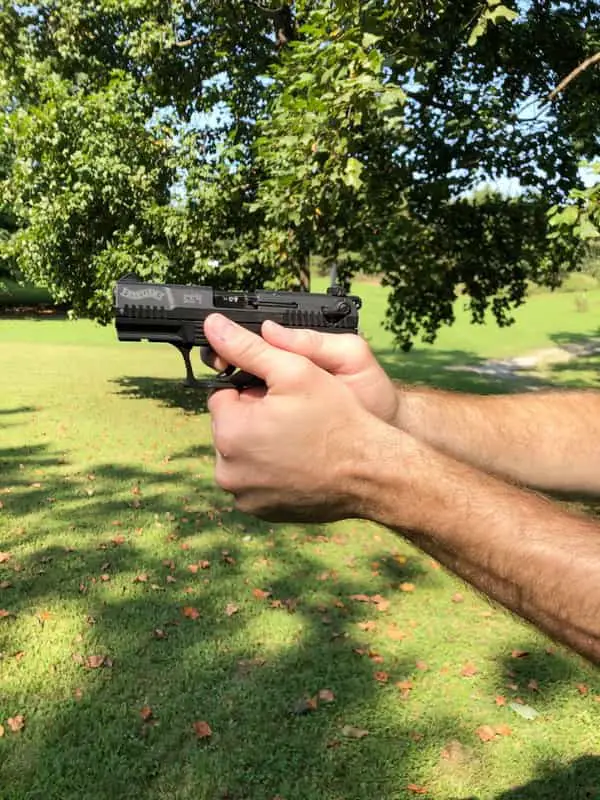
Stance
To make the most of your shot, you need a stabilizing stance that benefits your sight alignment, trigger access, and recoil control. There are several common stances, but you should try a few out to see which is most comfortable for you.
Isosceles
This stance is considered one of the most natural, two-hand stances for handgun shooting. You face your target squarely with your feet shoulder-width apart. Hold your gun directly in front of your eyes with both of your arms at full extension.
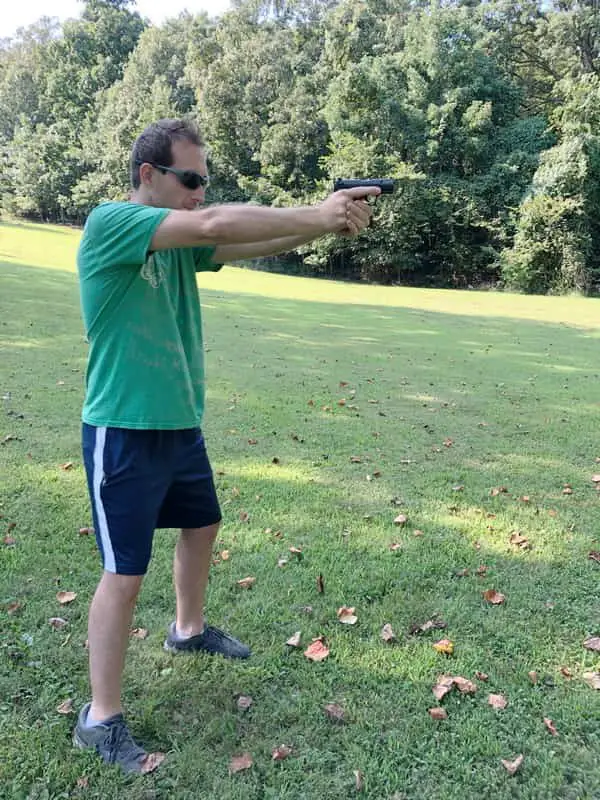
The isosceles is one of the fastest stances to assume, which is beneficial in an emergency.
Weaver
My personal favorite and one that I’m working on perfecting is the Weaver stance. It was first used by Jack Weaver, Deputy Sheriff of the Los Angeles County Sheriff’s Department, during a freestyle pistol competition in the late 1950s. It is not as easy to assume as the power isosceles but allows you a better range of vision with practice.
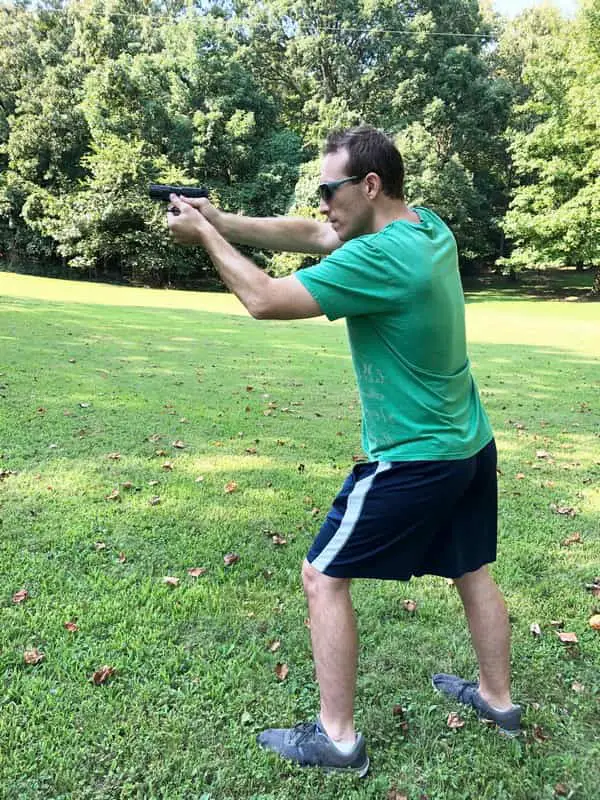
Assume a boxer-style stance by bringing your supporting foot forward, and toes pointed toward your target. Your toes on your shooting side should face outward by 45-degrees.
Your shooting arm is almost fully extended pushing the gun away from your body, and your support arm is bent pulling the gun back to you. This push and pull creates more stability to control muzzle rise. This means you will be able to fire subsequent shots more accurately.
I’m a lefty and I know it’s hard to find pictures of left handed stances. So here’s a picture for all you lefties out there.
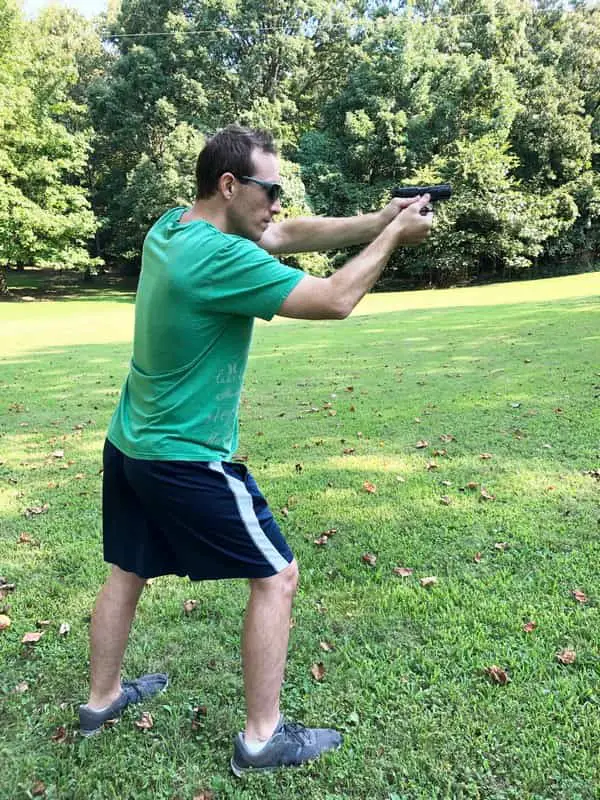
Chapman
The Chapman is also known as a modified weaver stance because the two are so similar. It takes longer to assume, but it is a more relaxed version of the weaver stance because it doesn’t require your feet to be as far apart. It also requires less upper body strength, which may be better for beginners.
To assume the Chapman stance you can start with the Weaver and then lock your shooting elbow straight. This allows people with less upper body strength to control their gun with bone in addition to muscle.
Power Point
When it comes to one-handed grip vs. two-handed grip, most enthusiasts recommend a two-handed grip for the best precision. However, you may find yourself in a situation where you cannot use both hands. Practicing one-handed stances helps keep you sharp at the range or in a real-life situation.
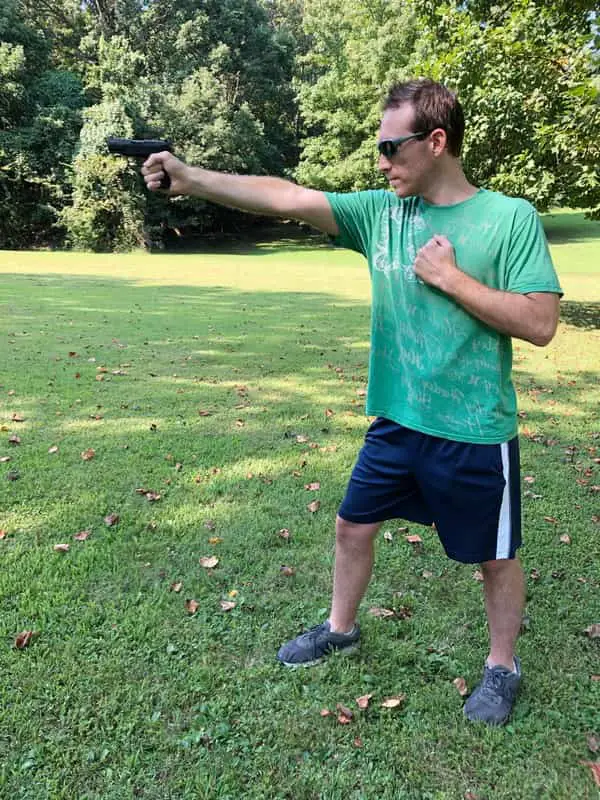
The power point is a quick stance you can perform with your strong or weak hand and still have accuracy at close range. Assume the boxer-style foot stance, and tuck your non-shooting hand into your chest in a fist for the best trigger control.
Aim
You must pay attention to get your most accurate shot, but there are a few aiming techniques that can help you improve precision.
- Aim with your dominant eye
- Align your front and rear sights
- You may want to look at the target, but focus on your gun
- Finally, select your point of aim
Remember, slow and steady when you are learning how to aim. Speed shooting will sacrifice accuracy.
How Do Triggers Work?
The trigger on your gun is a lever that trips another lever, called a sear, which holds the hammer back until enough pressure is applied to fire the handgun. Most handguns today have double action triggers that cock the hammer and fire a shot when pulled.
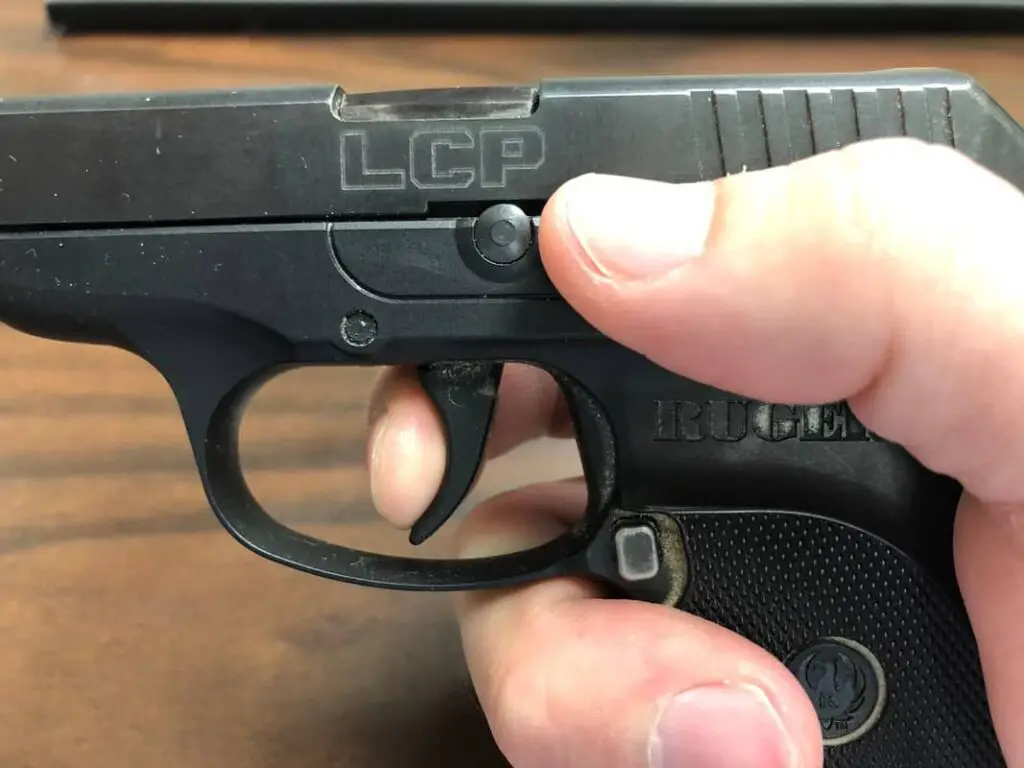
Trigger management, or the method of controlling your trigger when shooting, takes practice but pays off when you finally get the feel of your trigger. To get the most control of your trigger, use the pad of your fingertip. This most sensitive part of your finger can help you keep control of your trigger.
Dry firing with your trigger finger will help you improve your trigger management skills without wasting bullets. I personally like to stand in a full length mirror to check out my stance and dry fire. It feels a little silly at first but it’s effective.
Part of trigger management is perfecting trigger reset. Controlled trigger reset allows you to let the trigger move forward enough to reset the sear, but not so far that you lose valuable time between shots.
Effective trigger reset reduces the gun’s jerking motions, so you don’t have to realign your sights to make another shot.
Being Surprised By the Shot
It may seem counter intuitive to want to be surprised by the shot, but this technique can help you have more effective trigger management skills. Each trigger has a slack, sometimes referred to as pre-travel or take-up, that you feel when you press the trigger. The more gently you pull the trigger, the easier it is to feel the slack.
The slack is a slight resistance that initiates the mechanisms in the gun to fire. If you are pulling the trigger correctly, you may be surprised by the shot because it will sneak up on you in the middle of your trigger pull and doesn’t necessarily happen when the trigger is pulled all of the way back. More accurate shooters feel for the slack instead of jerking the trigger quickly.
Safety
Safety is essential when handling any firearms, including handguns. The first and most common rule of gun safety is to always treat a gun as if it’s loaded. This prevents accidental discharge or malfunction and can save a life.
Always keep your finger off of the trigger until you are ready to shoot. This best practice also avoids accidental discharge, harm to others, or personal injury.
How Not To Hold a Handgun
Another critical part of safety is correctly holding your pistol. Avoid holding the gun too low. You have much less control over the recoil the lower you hold your gun.
For two-handed grips, there are a few don’ts that will save you time and frustration when practicing. Believe me, I’ve made all of these mistakes while trying to perfect my stance and grip.
1. Don’t wrap your strong hand around your support hand.
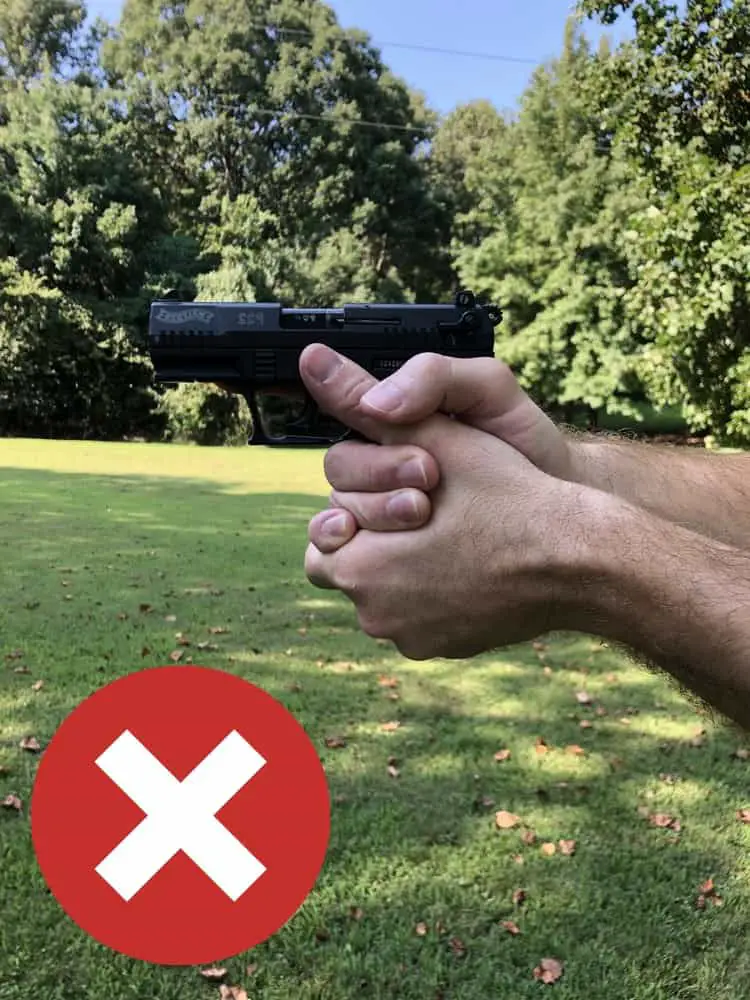
2. Don’t interweave your fingers around the gun.
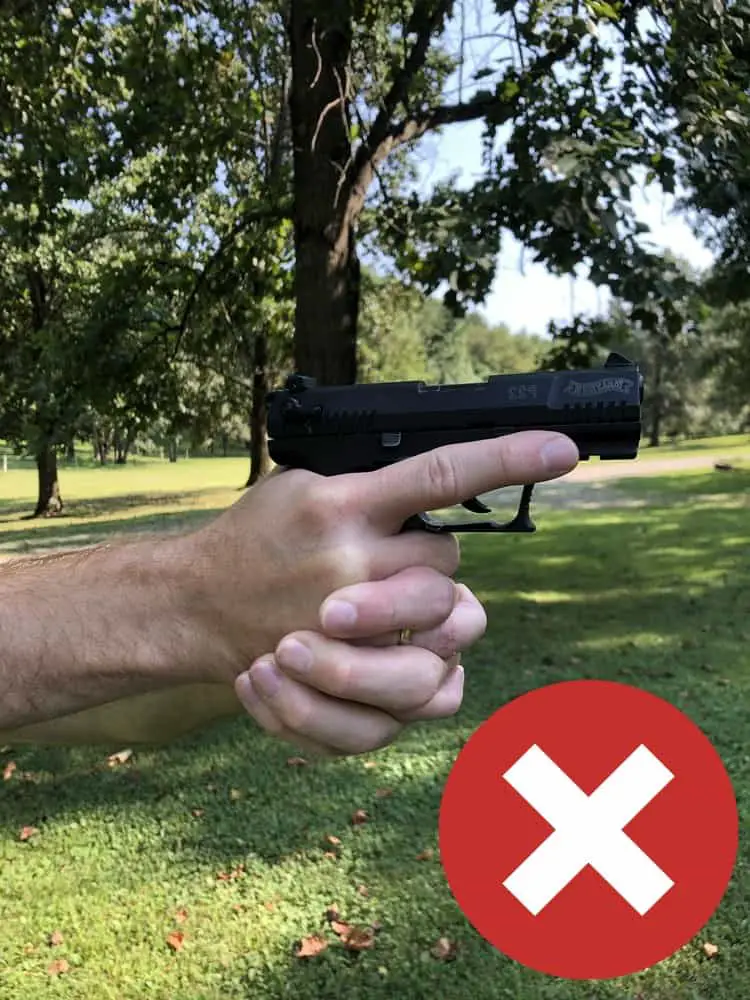
3. Don’t cross your support hand thumb behind your handgun.
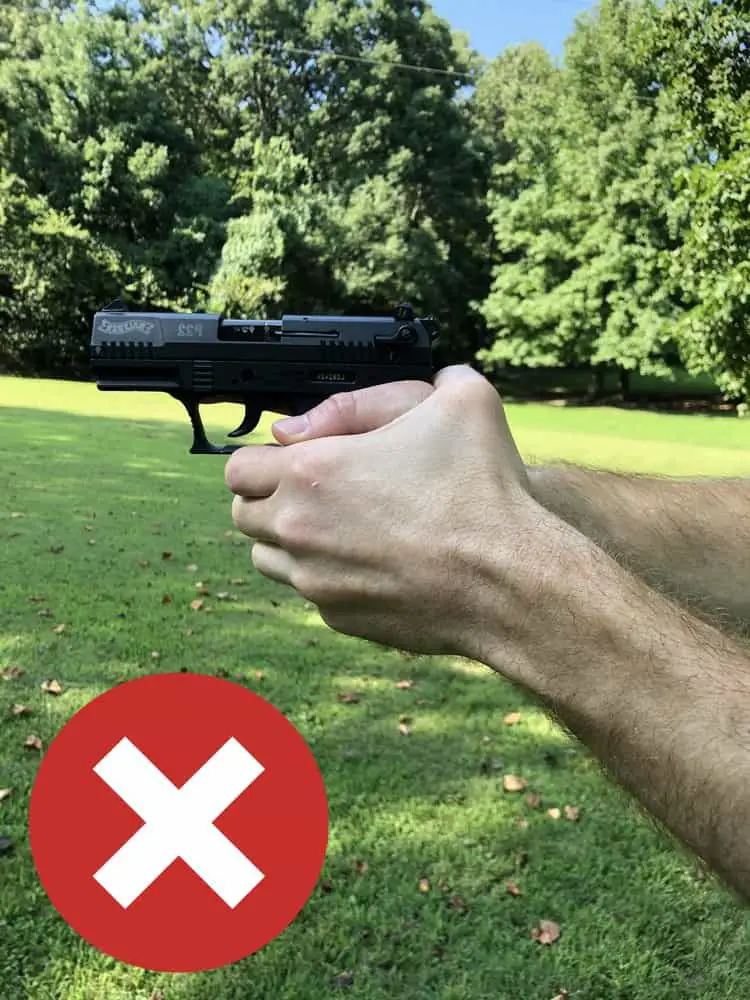
4. Don’t rest your index finger in front of your trigger guard.
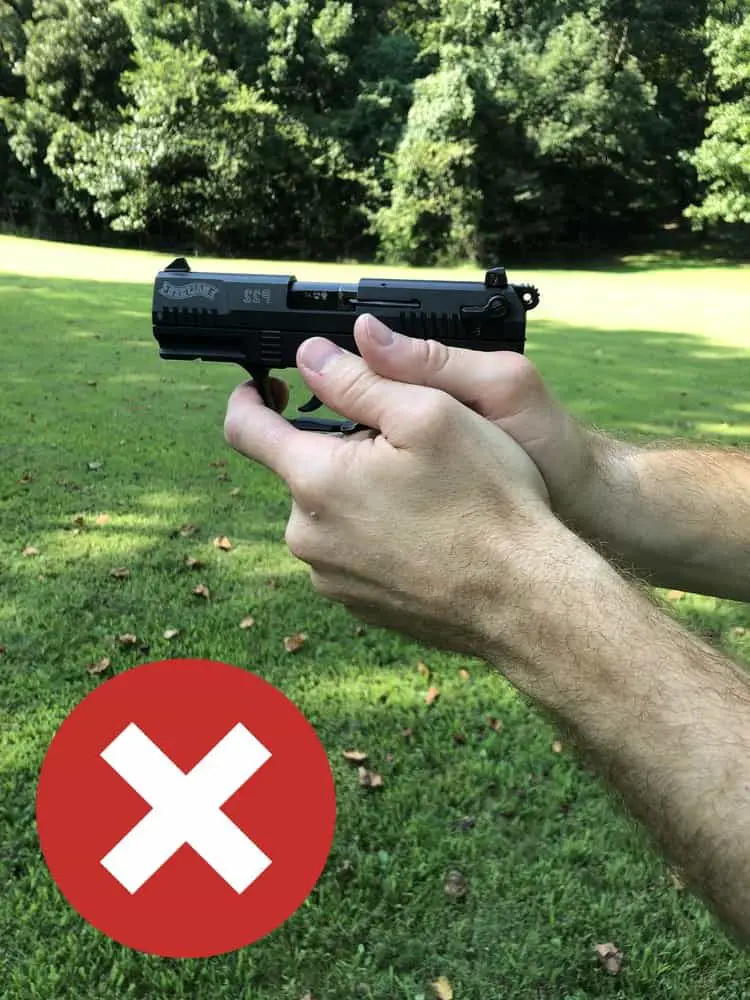
Have you ever thought about buying ammo online?
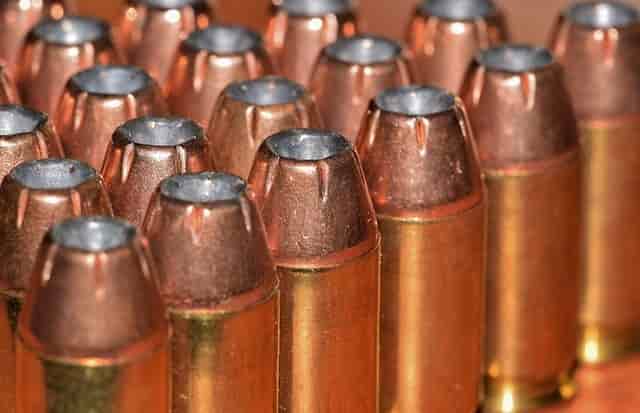
I’m telling you it’s so easy with Lucky Gunner! The ammo shown on their site is guaranteed to be in stock and will ship fast. I heartily endorse Lucky Gunner and so do their many customers.
“Okay, so far I’ve dealt twice with LuckyGunner, and all I can say is, I LOVE YOUR COMPANY!!!!
Imagine: only items in stock are advertised. Who’da thunk, eh? The more highly advertised ones – Cheaper Than Dirt, Cabela’s, et. al. – will put you on backorder forever and a day. But LuckyGunner – I ordered 500 shells of .45 ACP (hard to get in this “shortage”) – and there it was at my address. No backorders, no bull. Business as it should be.
Yes, I’m telling my friends! I’m constantly writing down your addy on bits of paper (and running out of the latter), spreading the joyous news, “No backorders! No bull! Try LuckyGunner.com, you won’t be sorry!” Thank you for being there for an ammo-starved public. And, thanks for the SUPERB customer service.”
— Walter J., Silverdale, WA —


Jason Huskey
Owner of CCWClasses.net
Jason Huskey is a family man with three kids and a wonderful wife. He’s always starting new hobbies, but his true passion lies in shooting sports. Jason has been a CCW license holder for over 10 years and carries every day. In addition to firearms, he also enjoys playing guitar and writing songs. He tries to live by the Christian values he believes in.
More things you might enjoy…
Can a 38 Special Shoot 357 Rounds?
Image by MikeGunner from Pixabay I’ve long since discovered that very few activities give me the same thrill and sense of security as firing a gun. As a gun owner and enthusiast, I’ve always been curious about which guns can shoot which kinds of ammunition. I have a Derringer five-shot revolver that uses .22 rounds.…
Who Makes the Most Popular Brands of Ammo
If you are here to figure out who makes Herter’s ammo just look below the following table for a more thorough answer. If you are looking for a specific type of ammo, then you need to start by figuring out who makes it. There are lots of options for ammunition and each type of bullet…
What Does Full Metal Jacket Mean?
If you have heard the term full metal jacket, then you might be wondering what this means. I know that growing up, I heard this term a lot. I dismissed it as some sort of saying or cliche. Eventually, I decided that I needed to figure out what people meant when they use this term.…
How Often Should You Clean Your Gun?
After purchasing a firearm, you might wonder how often you should clean your gun. The truth is that it largely depends on how often you use it and where you live. Keep reading to learn more. How Often Should You Clean Your Gun? The short answer: do a light cleaning after every shooting session and…
What Is The Main Difference Between Centerfire And Rimfire Ammunition?
Rimfire vs Centerfire Everyone has to start somewhere. If you’re new to guns, learning the difference between rimfire and centerfire ammunition is important. Let me backtrack a moment. The first time I went out on the gun range, I had zero idea that there were different types of ammo for different types of weapons. All I knew…
Continue Reading What Is The Main Difference Between Centerfire And Rimfire Ammunition?
What Is Stippling On A Gun?
Hey, would you like a more firm grip on your gun? Would that help you shoot better? Well that is what stippling is for. Stippling is a modification to the grip that makes it, well, more grippy. It is done by sanding off the original finish and then using a hot soldering iron to make…
What Is A Centerfire Pistol?
To answer the question: “What Is A Centerfire Pistol?”, you must first understand that there are two main types of ammunition: Centerfire Rimfire These ammo categorizations are based on where the firing pin hits the back of the bullet to make it fire. A centerfire pistol is one where the firing pin strikes the center…
Is It Bad To Dry Fire A Glock?
There are loads of myths and assumptions surrounding handguns. If you grew up around guns, you probably heard some of these myths. Today, we will answer the question: Is it bad to dry fire a Glock. The Quick Answer Dry firing modern centerfire guns is completely fine (this includes most Glocks). The firing pin does…
What Is The Sight Picture?
When you first became interested in shooting you probably heard the terms sight picture and sight alignment being thrown around. Most people tend to use the two terms interchangeably; however, they do not mean the same thing. In this guide, I will make a clear distinction between sight picture and sight alignment. To master any new trade, you must…
What is Ball Ammo
When you hear the term “ball ammo” you may be picturing an actual ball. While the term did originate from ball shaped ammo, that’s not what it means today. Most ball ammo today is cylindrical in shape. It will have a lead core coated with copper. Keep reading to learn all about the history and…
What is ACP Ammo?
So much of our gun culture today was influenced or actually designed by a legend named John Browning. To understand where ACP Ammo came from we have to understand a little bit about this man. I’ll go into more detail about John Browning in a second but let’s answer the main question first, “What is…
